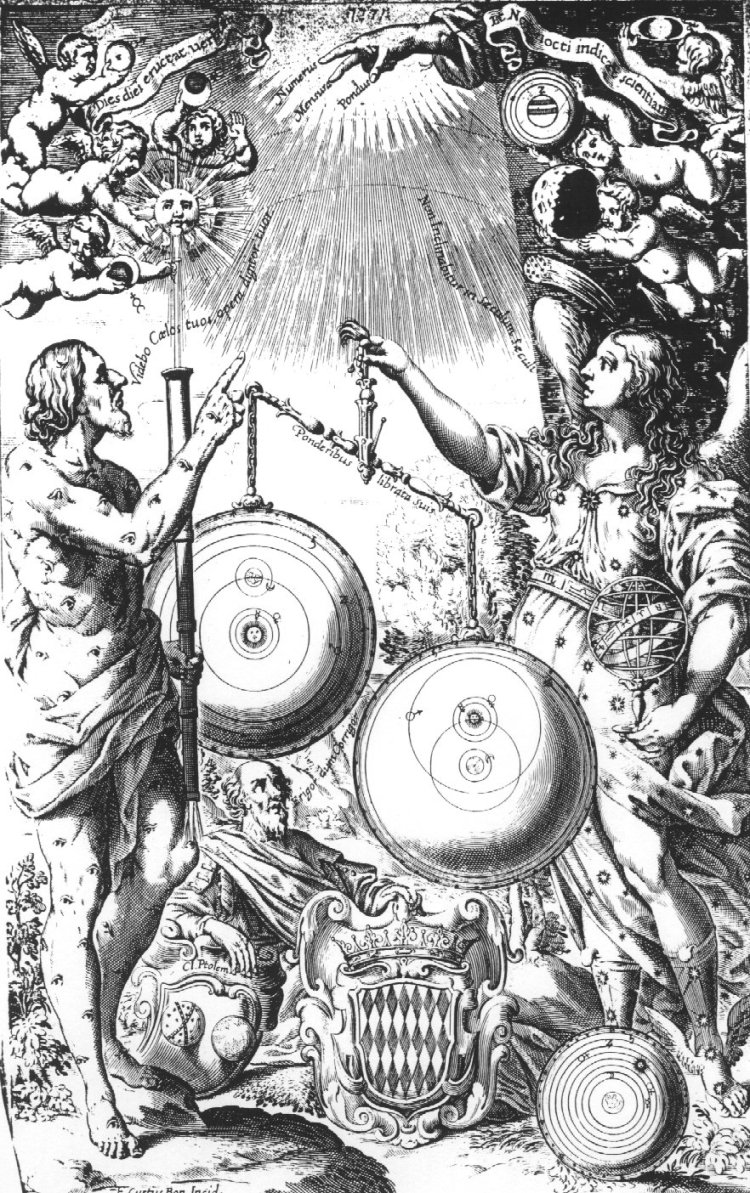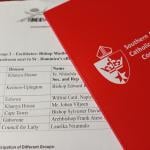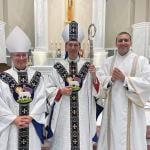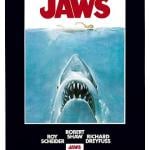According to Anglican Bishop James Ussher, today is the 6021st birthday of the Universe! At 9 AM (not sure if that’s Dublin or Jerusalem time).
Everybody has a good laugh at poor old bishop Ussher, but Steven Jay Gould–of all the unlikely defenders–has respect for the old man and once wrote an essay on why we should not write him off so easily. His point simply that Ussher did what good scientists try to do: work with the evidence and information they have in order to figure out what is going on. If a scientist is doing that, he is being a good scientist, even if the evidence he has to work with is bad.
Lots of moderns and postmoderns imagine they are smarter than their ancestors merely because they have access to the fruits of the hard brain work their ancestors did. But most postmoderns could not tell you how the tech they use works, and still less how to understand the principle–physical or metaphysical–by which their ancestor got from ignorance to knowledge. Most postmoderns simply parrot what they were told and, if really challenged to prove what they “know” would reveal themselves as spectacularly ignorant. Proof? Mike Flynn asks us to show, without reference to textbooks, TV shows, and such like that the earth is moving. Betcha can’t. And I know I couldn’t.
Before you laugh at your ancestors, TOF invites you to prove that the earth is, contrary to your senses, in wild and careening double motion: spinning like a top and whipping around the sun without (somehow) leaving the Moon and Air behind, and without everyone stumbling around like dunkards. You are not allowed to appeal to authority or to the success of NASA, or suchlike things. You’ve got eyeballs and armillaries, and that’s pretty much it. Go. TOF will wait here.
2. Sundry Proofs of the Stationary Earth
Astonishingly, Late Moderns, who hold heliocentrism as a sort of holy doctrine, are generally unaware of the empirical evidences that would justify it; while Early Moderns, who thought geocentrism dough-face obvious, were well aware of the evidences that falsified heliocentrism. These evidences, plucked variously from Aristotle, Oresme, and Riccoli follow; but be it noted that both Oresme and Riccoli also supplied rebuttals for most of them and Aristotle cautioned against taking his cosmology as more certain than he himself did:
“We are far away from the things we are trying to inquire into, not only in place but more so in that we have sensation of exceedingly few of their accidents. …. It is good to inquire about these things and so to deepen our understanding, although we have little to go on and we are situated at such a great distance from the attributes of these things. Nevertheless, from contemplating such things nothing [we infer] should seem to be unreasonable, holding them now as fraught with difficulties. – Aristotle, On the heavens, 2.3.286a5-7 and 2.12.292a14-18
Fig. 2. Ancient version of
Michelson-Morley experiment2.1 The Argument of the Winds.
If the Earth is rotating, “we and the trees and houses are moved toward the east very swiftly, and so it should seem that the air and wind blow continuously and strongly from the east, much as it does against a quarrel shot, only much more strongly.…. But the contrary appears by experience.” Therefore, the earth does not turn. (Oresme, “On the book of the heavens and the world by Aristotle.”)
Fig. 3. The Arrow.
I shot an arrow into the air.
It should fall west, not in my hair.
I do not fear it in the least:
As the arrow flies, the earth moves east.
Or not. Ouch!2.2 The Argument of the Arrow.
“If a person is on a ship moved rapidly eastward and an arrow were shot directly upward, it ought not to fall on the ship but a good distance westward from the ship. Similarly, if the earth is moved so swiftly in turning from west to east, and it has been posited that one throws a stone directly above, then it ought to fall, not on the place it left, but a good distance to the west. But in fact the contrary is clear.” (Oresme, “On the book of the heavens and the world by Aristotle.”)
Fig. 4. As the world turns.
The top of the tower moves faster than
the bottom, so objects dropped from the
top will have an eastward deflections
and fall east of the plumb line.
Not to scale, dudes!2.3 The Argument from Coriolis
If the Earth is rotating objects at the tops of tall buildings will be moving eastward at a higher velocity than those at the base of the building. Therefore, an object dropped from the top of a tower will fall east of the plumb line. No such deflection is observed. (This argument was unknown to Aristotle and the medievals, but was included in Riccioli’s Almagestum novum, summarized by Graney in “126 Arguments Concerning the Motion of the Earth.”
2.4. The Argument from Parallax.
“The earth, then, also, whether it move about the center or as stationary at it, must necessarily move with two motions. But if this were so, there would have to be passings and turnings of the fixed stars. Yet no such thing is observed. The same stars always rise and set in the same parts of the earth.” (Aristotle, On the heavens, Book II, part 14)
2.5 The Weird Argument from Motion.
“The lowest place belongs to the heaviest and lowest of bodies. The Earth is the heaviest body. The center of the world [universe] is the lowest place. Thus Earth lies at the center of the world. … If Earth were shifted towards the moon, heavy bodies would still tend toward the center of the world, not towards the Earth. (So if the sun were at the center of the world, all heavy objects would naturally fall toward the sun, which is contrary to experience.) (Summarized by Graney in “126 Arguments Concerning the Motion of the Earth.”)
2.6 The Argument from Heavenly Motions.
“We see with our senses the sun and moon and many stars rise and set from day to day, and some stars turn around the arctic pole. This could not be except by the movement of the heavens.” (Oresme, “On the book of the heavens and the world by Aristotle.”)
IOW, all the empirical evidence seemed to be against a mobile earth and in favor of a stationary earth.
So what were the arguments in favor of geomobility?
3. Mystical Woo-woo
But… didn’t Aristarchus and the Pythagoreans propose heliocentrism in ancient times? If only they had prevailed, we might have had Real Science™ millennia sooner! We’d be on freaking Mars by now! What was their evidence?
Well, you see, Fire is nobler than earth and the center is a nobler position. So fire has to be in the center. QED.
Da Man There are many names for this sort of thinking, but “scientific” is not one of them. Aristotle says of the Pythagoreans:
In all this they are not seeking for theories and causes to account for observed facts, but rather forcing their observations and trying to accommodate them to certain theories and opinions of their own.
– Aristotle, On the heavens II.13.293aToday, we have answers to the objections listed above, many of them developed in the Middle Ages; but those answers depend on the most part on measurements and concepts that were not then available: force, mass, inertia, etc. For example, Oresme answered the Argument of the Winds by postulating common motion: the sphere of the air is also moving to the east along with the sphere of the earth. But he had no propter quid to explain why the air and the earth shared a common motion. You can’t just say that if only A and B were true, then observation C would follow. You actually have to show that A and B are true. The Pope said as much to Galileo, and got mocked for his pains.
Oresme did undermine the one positive argument for a stationary earth when he appealed to relativity:
In the fourth book of The Perspective of Witelo, [he says] that one can perceive movement only in such a way as one perceives one body to be differently disposed in comparison with another. I say, then, that if the lower of the two parts of the cosmos … should today move with a diurnal movements while the upper (that is, the heavens) should not, we could not perceive this change in any way, but everything would seem the same today and tomorrow. It would seem to us continually that the part where we are situated was at rest and that the other part was always moved, just as it seems to a person who is in a moving ship that the trees outside are moved. Similarly, if a person were in the heavens and it were posited that they were moved with a diurnal movement, and [furthermore] that this man who is transported with the heaven could see the earth clearly and distinctly and its mountains, valleys, rivers, towns, and chateaux, it would seem to him that the earth was moved with a diurnal movement, just as it seems to us on the earth that the heavens move. Similarly, if the earth and not the heavens were moved with a diurnal movement, it would seem to us that the earth was at rest and the heavens moved. This can be imagined easily by anyone with good intelligence. For this [reasoning] is evident the response to the [apparent motion of the heavens], since one could say that the sun and the stars appear thus to set and rise and the heavens to turn as the result of the movement of earth and its elements where we are situated.
In short, motion is relative to the inertial reference frame in which the observer is situated. Oh, them unscientific medieval dark agers!
There were similar rebuttals to most of the arguments: plausible-sounding but unevidenced. The most serious objections were those dealing with Coriolis-like effects and with parallax.
The Copernicans answered the Argument from Parallax by claiming that the stars are much farther away and the parallax is therefore too small to detect. But you cannot save one unproven hypothesis by adding a second unproven hypothesis to it, and there were sound scientific reasons for supposing the stars to be closer.
By the way, read that whole magnificent series of his on how we got from a geocentric to a heliocentric model of things. It’s a ton of fun.
My point is simply this: We stand on the shoulders of giants. An overwhelming amount of information and discovery and technology has been accrued, discovered, and invented for and handed to us by people in special priestly garments called “lab coats”. We trust them and, for the most part, we are wise to do so. They have specialized knowledge of things we are ignorant of and we prudently give them the floor.
My own view is that Catholics are wise to do the same with the Magisterium. However, since the Reformation, the acid bath of skepticism has eaten away at the bonds of trust which make this possible. Individualism (or as it is know in hell, “Divide and conquer”) has long dominated western theology and currently working its way through the subculture of the Greatest Catholics of All Time as they persuade themselves that they have been anointed by God to defend the Church from the Pope and the Magisterium.
But in addition to that, we know are seeing an insane turn toward individualizing even our approach to the sciences. More and more people believe that a Google search makes them the equal of a team of Ph.Ds in epidemiology or climate science or cosmology or biology. People who have no idea what they are babbling about proclaim that Flat Earthism is gaining acceptance around the globe and geocentrism is demanded by Catholic teaching and airplane contrails are CIA mind control drugs and vaccinations are plots to make children autistic. Sola Google has replaced sola scriptura but the idea is the same: I can browse my some random passages of some random documents and declare myself a far greater master of all knowledge than those who have put years of concentrated study into question. I and I alone can be trusted to Know.
This is madness and the only way back is to recover common sense and the ordinary bonds of human trust upon which God builds the supernatural gift of Faith that Jesus will remain with his Church and guide it into all truth by his Spirit.
















